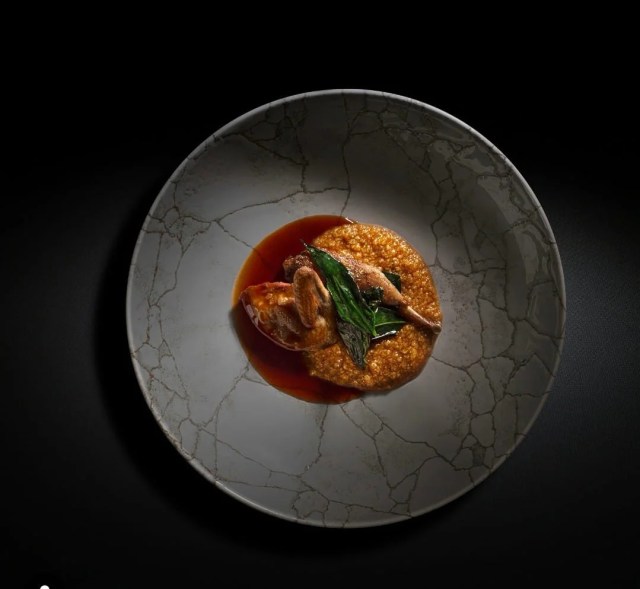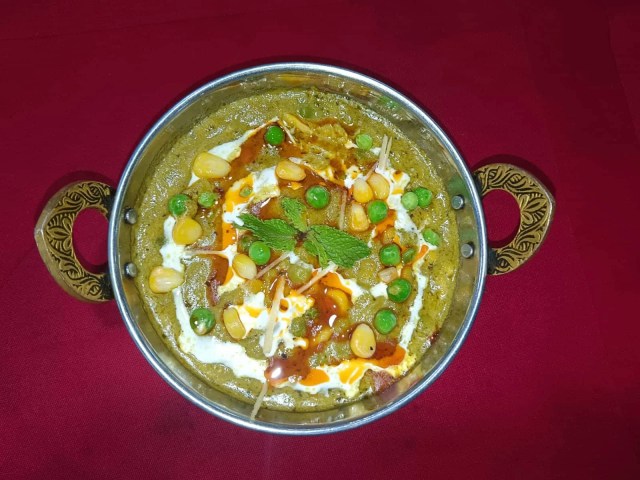
What is Menu Engineering – The Science of Building Profitable, Strategic, and Customer-Driven Menus
Introduction – The Menu as a Strategic Business Tool
In the culinary world, the menu is far more than just a list of dishes—it is the lifeblood of your business. It’s your sales pitch, your brand identity, and your financial engine all rolled into one. While chefs often focus on creativity and flavor, successful restaurateurs and executive chefs understand one key truth: a well-designed menu can significantly improve profitability, customer experience, and operational efficiency. This is where menu engineering becomes essential.
Menu engineering is the practice of strategically designing a menu to drive customer behavior and maximize restaurant profits. It blends culinary art with business science, using psychology, data analysis, and layout design to influence how customers order, which items are most profitable, and how kitchen operations are streamlined.
Whether you’re running a casual café, a fine-dining restaurant, or a hotel buffet, understanding menu engineering can transform your bottom line. This article dives deep into its meaning, methodologies, practical applications, and long-term benefits for the culinary industry.
What Is Menu Engineering?
Menu engineering is the process of analyzing and optimizing a restaurant’s menu to increase profitability and enhance customer satisfaction. It involves evaluating the performance of each menu item in terms of both popularity (how often it is ordered) and profitability (how much money it brings in), then making strategic decisions about pricing, placement, design, and promotions based on that data.
Originally developed in the 1980s by hospitality experts at Michigan State University, menu engineering has become a vital tool for modern restaurant management. It requires collaboration between chefs, marketing professionals, cost controllers, and graphic designers to ensure that menus are not only delicious and beautiful—but also profitable.

The Four Key Categories of Menu Items
The core of menu engineering lies in categorizing each dish into one of four quadrants based on its contribution margin (profit per item sold) and its sales volume. Here are the four categories:
1. Stars
These are items that are high in profit and high in popularity. Customers love them, and they generate strong margins. Stars should be featured prominently on the menu, possibly with enticing descriptions or highlighted visuals.
2. Plowhorses
These are popular but low in profit. Guests order them frequently, but they may have high ingredient costs or complex preparation. The goal is to maintain their popularity while improving their margins—perhaps through portion control, ingredient substitution, or modest price adjustments.
3. Puzzles
Puzzles are high in profit but low in popularity. These dishes bring great margins, but they aren’t selling well. The challenge is to figure out why—maybe they’re hard to find on the menu, poorly named, or need better promotion. Solving the puzzle can unlock valuable revenue.
4. Dogs
Dogs are low in profit and low in popularity. They usually clutter the menu and drag down efficiency. While they may have niche appeal, most should be removed, reimagined, or hidden from the spotlight unless they serve a strategic purpose (e.g., dietary options or legacy dishes).
This quadrant system forms the backbone of every menu engineering analysis and guides how decisions are made regarding placement, pricing, and design.
Step-by-Step Process of Menu Engineering
Step 1: Gather and Analyze Data
Start by collecting data on your menu items over a defined period (usually 3–6 months). You’ll need the cost of each dish, number of times each dish was sold, and selling price.
Use this data to calculate:
- Contribution Margin: Selling Price – Cost of Goods Sold (COGS)
- Total Profit: Contribution Margin × Units Sold
- Average Popularity: Percentage of total sales for each item
This will give you a clear view of what’s selling and what’s actually making you money.
Step 2: Classify Menu Items
Once the numbers are in, assign each dish to one of the four quadrants (Star, Plowhorse, Puzzle, Dog) based on profitability and popularity.
Use visual charts like the Menu Engineering Matrix, where the X-axis represents popularity and the Y-axis represents profitability. Plot each item accordingly for a visual summary of your menu’s performance.
Step 3: Evaluate Performance and Make Decisions
Once categorized, it’s time to take action:
- Highlight Stars using visual or verbal cues (e.g., chef’s recommendation, color blocks)
- Optimize Plowhorses by adjusting portion sizes or ingredients to improve margins
- Rebrand or promote Puzzles with new names, descriptions, or marketing strategies
- Remove or replace Dogs unless they serve a strategic role (like vegan or allergy-safe options)




Step 4: Redesign the Menu Layout
Strategic placement matters. Research shows that customers’ eyes follow predictable paths across a menu—often called the “Golden Triangle”. Items placed in the top right, center, or upper left tend to draw more attention. These are great spots for your Stars and Puzzles.
Additionally, use visual psychology to influence choices:
- Use boxes or bold fonts to draw attention to high-profit items
- Avoid clutter and overwhelming lists
- Use descriptive, sensory-rich language to enhance perceived value
- Group similar items and use logical headings (Appetizers, Mains, Vegetarian, etc.)
Step 5: Review and Revise Regularly
Menu engineering is not a one-time task. Ingredient costs change. Customer preferences evolve. New culinary trends emerge. Regularly re-analyzing your menu (every 3–6 months) ensures continued alignment with financial goals and market demands.
Psychological Strategies in Menu Engineering
Menu engineering isn’t just about numbers—it’s about influencing customer behavior. The best menus guide diners to make decisions that are satisfying for them and profitable for the business. Here are some common psychological techniques:
Price Framing
Instead of listing ₹500, try ₹499. This psychological pricing feels more approachable. Avoid using the currency symbol (₹) altogether—studies show that it triggers thoughts of spending and reduces purchase likelihood.
Anchor Pricing
Place an expensive item at the top of the menu to make other dishes seem more reasonably priced. For example, a ₹1500 steak makes the ₹950 fish feel like a bargain—even if it has a higher margin.
Decoy Effect
Add a high-priced, low-value dish to make your targeted high-margin item look more attractive by comparison. This draws attention to the “middle” option, which tends to be the most profitable.
Descriptive Labeling
Instead of “Chicken Soup,” say “Grandma’s Slow-Simmered Chicken Soup with Fresh Herbs.” This not only sounds tastier but adds perceived value, which justifies higher prices.
Limited Choices
Too many options overwhelm customers and slow down decision-making. Keeping categories limited (6–7 items per section) improves speed, satisfaction, and operational efficiency.
Menu Engineering for Different Types of Culinary Operations
Fine Dining Restaurants
In fine dining, where experience and emotion drive choices, menu engineering focuses on storytelling and brand alignment. Stars are promoted through tasting menus or wine pairings. Puzzles might be featured as chef specials. Design is minimalist, luxurious, and tactile.
Casual Dining
Here, price sensitivity is higher. Menu engineering focuses on combo deals, upselling through add-ons, and balancing margins across popular dishes. Puzzles can become specials of the week, and Dogs are typically eliminated faster.
Hotels and Banquets
Buffet items and banquet menus benefit from batch costing and usage tracking. Engineering here revolves around forecasting, yield optimization, and presentation. Less emphasis is on menu design and more on portion economics.
Cloud Kitchens and Takeaway
In digital menus, thumbnail images, top-bar placement, and high-speed loading matter more than paper design. Engineering here relies on data analytics and A/B testing. Online-only strategies like coupon bundling and delivery-exclusive Stars are key.
Challenges in Menu Engineering and How to Overcome Them
Data Inaccuracy
Menu engineering depends on reliable data. Inaccurate costing or POS tracking will mislead your analysis. Use food costing software or Excel templates rigorously, and verify COGS with real-time inventory.
Resistance to Change
Chefs often resist removing dishes they love. Remind them that profitability ensures creative freedom in the long term. Build a collaborative approach that respects both creativity and business needs.
Customer Backlash
Changing popular but unprofitable dishes can trigger backlash. Consider small tweaks first—portion reduction, slight price hikes, or ingredient swaps—before full removal.
Tools and Technology That Support Menu Engineering
Modern restaurant operations can benefit from tools that automate the menu engineering process:
- xtraCHEF and MarketMan for recipe costing
- Upserve and TouchBistro for sales data analysis
- Canva and Adobe InDesign for design layouts
- MenuCalc for nutritional info integration
AI-powered dashboards can also predict seasonal popularity and suggest real-time menu updates, creating smarter, data-driven decisions at scale.
Real-World Case Study – Menu Engineering in Action
Consider a mid-tier bistro in Mumbai struggling with low profits despite decent footfall. After analyzing three months of data, the management found that their pasta dish (costing ₹200 and selling at ₹450) was a Plowhorse—very popular, but with thin margins.
They redesigned the recipe to include slightly more cost-effective ingredients, raised the price to ₹499, and featured it as “Chef’s Pasta Creation” with upgraded presentation. In two months, the contribution margin improved by 15%, and the dish moved into the Star category.
Simultaneously, they retired a “Baked Mushroom Parcel” that had high costs, minimal orders, and long prep time—a clear Dog—and replaced it with a seasonal “Spicy Corn Chaat” that quickly became a Puzzle.
By continually adjusting based on data, the restaurant improved monthly profits by 12% without compromising customer experience.
Conclusion – Menu Engineering as a Culinary Superpower
Menu engineering is where culinary creativity meets business intelligence. It is not about tricking customers or compromising quality—it is about designing a menu that works for everyone: guests, chefs, and owners.
By understanding what sells, what earns, and what can be improved, chefs and restaurateurs can build menus that reflect their passion while sustaining their operations. In a world where margins are tight, competition is fierce, and diners are more informed than ever, menu engineering is no longer optional—it is essential.
Done right, it transforms your menu from a static document into a living, breathing strategy—a silent salesperson that works 24/7 to make every order count.



